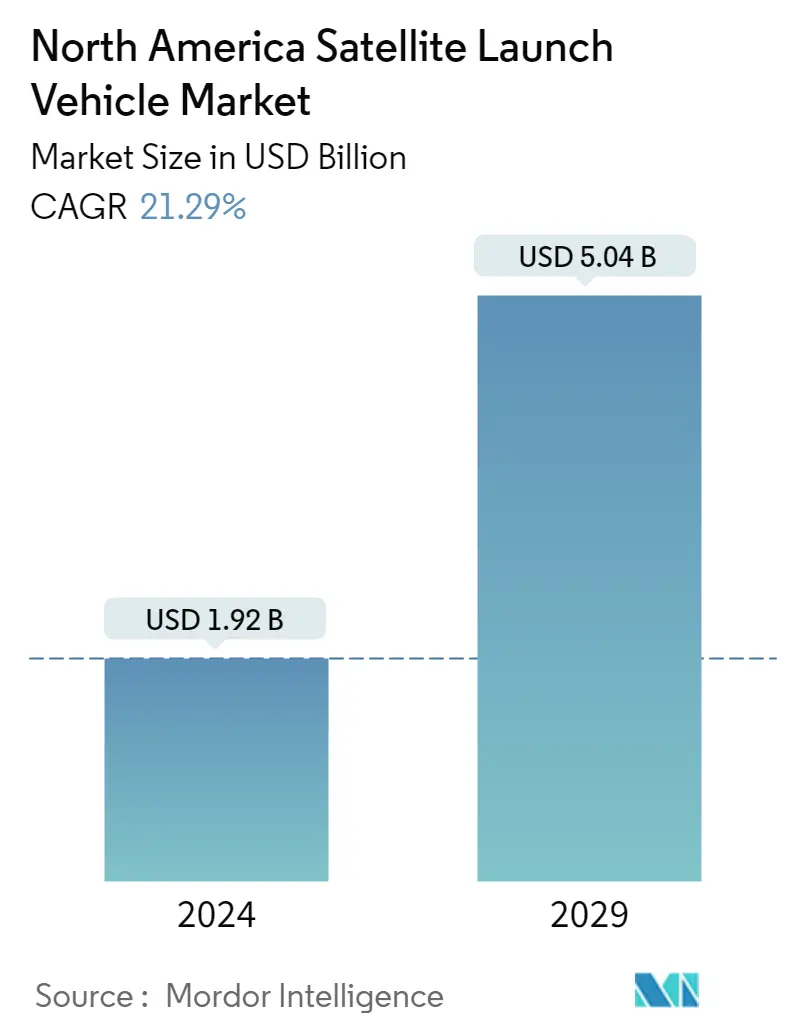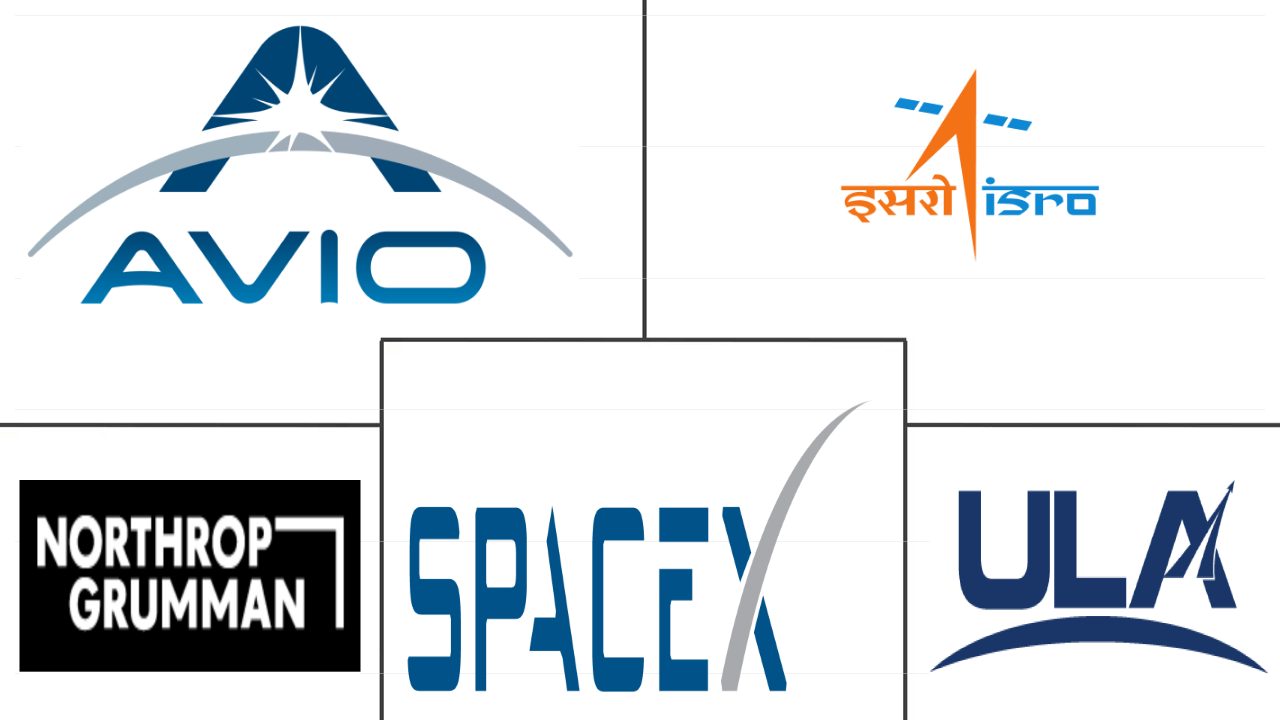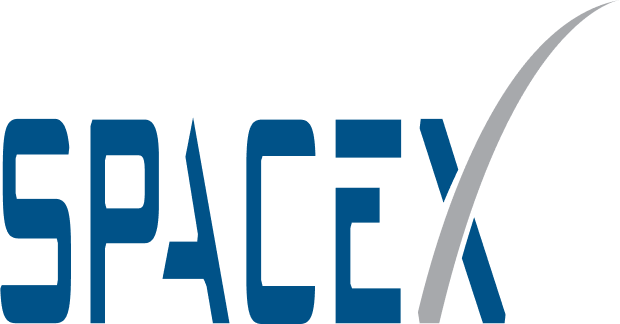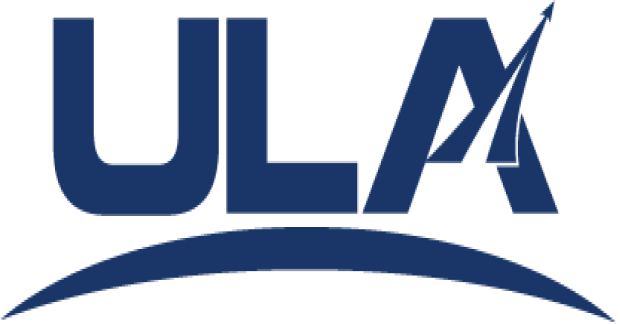North America Satellite Launch Vehicle Market Size

|
|
Study Period | 2017 - 2029 |
|
|
Market Size (2024) | USD 1.92 Billion |
|
|
Market Size (2029) | USD 5.04 Billion |
|
|
Largest Share by Orbit Class | LEO |
|
|
CAGR (2024 - 2029) | 21.29 % |
|
|
Largest Share by Country | United States |
Major Players |
||

|
||
|
*Disclaimer: Major Players sorted in no particular order |
North America Satellite Launch Vehicle Market Analysis
The North America Satellite Launch Vehicle Market size is estimated at USD 1.92 billion in 2024, and is expected to reach USD 5.04 billion by 2029, growing at a CAGR of 21.29% during the forecast period (2024-2029).
1.92 Billion
Market Size in 2024 (USD)
5.04 Billion
Market Size in 2029 (USD)
-2.82 %
CAGR (2017-2023)
21.29 %
CAGR (2024-2029)
Largest Market by Launch Vehicle MTOW
51.11 %
value share, Medium, 2022
The demand for medium launch vehicles is fueled by the granting of multi-year contracts by government and commercial end users to launch vehicle manufacturers and launch service providers.
Fastest-Growing Market by Orbit class
24.46 %
Projected CAGR, LEO, 2023-2029
Government initiatives pertaining to LEO satellites and their numerous uses, such as commercial communications, Earth observation, navigation, and military surveillance, will likely aid in the growth of LEO satellites.
Largest Market by Orbit Class
57.65 %
value share, LEO, 2022
LEO satellites are increasingly being adopted in modern communication technologies as they play an important role in Earth observation applications.
Leading Market Player
49.23 %
market share, Space Exploration Technologies Corp., 2022

SpaceX is the leading player in the North American satellite launch vehicle market and maintains its market share globally through its Starlink project. The company produces 120 satellites per month.
Second Leading Market Player
41.51 %
market share, United Launch Alliance, LLC., LLC.

United Launch Alliance is the second leading player in the market. The company emphasizes its track record of reliability and mission success. By consistently delivering successful launches, ULA instills confidence in its customers, which helps it maintain a strong market share.
Rising demand for orbital launch systems in the North American region has supplemented the growth
- At launch, a satellite or spacecraft is usually placed into one of many special orbits around the Earth, or it can be launched into an interplanetary journey. Satellites orbit the Earth at varying distances depending on their design and primary purpose. Each distance has its own benefits and challenges, including increased coverage and decreased energy efficiency. Satellites in the Medium Earth orbit include navigational and specialized satellites designed to monitor a specific area. Most scientific satellites, including NASA's Earth Observation System team, are in the low Earth orbit.
- Different satellites manufactured and launched from this region have different applications. For instance, during 2017-2022, out of the seven satellites launched in the MEO orbit, most were built for navigation/global positioning purposes. Similarly, out of the 32 satellites in the GEO orbit, most were deployed for communication and earth observation purposes. Around 3,000 LEO satellites launched were owned by North American organizations.
- The growing use of satellites in areas such as electronic intelligence, Earth science/meteorology, laser imaging, electronic intelligence, optical imaging, and meteorology is expected to drive demand for the North American satellite launch vehicle market, with LEO satellites expected to account for a major share. Between 2023 and 2029, the market is expected to surge by 213%.
Rising demand for low-cost launch systems driving the market
- The demand for low-cost launch systems capable of sending heavy satellites into high-altitude orbits several times a year is growing among governments and commercial organizations in North America. Due to the growing number of small satellite launches, including ride-hailing services on medium and heavy-duty launchers, as well as the growth of small launch capacities, launch prices have decreased Y-o-Y.
- In addition, the satellite manufacturing industry is driven by the demand for satellites for applications ranging from military surveillance, communications, and navigation to earth observation. As a result, the demand for satellites from the civilian/government, commercial, and military industries is increasing. During the historical period, a total of 4,351 satellites were launched in the region. The growth in the number of satellites launched from 2021 to 2022 was 61%, while the growth from 2021 to 2020 was 40%.
- Space agencies and private companies have been trying to reduce the costs of satellite launching systems over the past few years. Many market players have invested in the development of reusable launch systems to recover some or all the component stages. The market is dominated by only a few players due to their huge product offerings. Private companies such as SpaceX and Blue Origin are investing in space technology and driving innovation in the industry. Space organizations such as NASA have partnered with private players like SpaceX for the production and launch of satellites in this region. The market is expected to surge by 219% in the forecast period, and the United States is expected to be the largest country-wise market.
North America Satellite Launch Vehicle Market Trends
Growing demand and competition in the North American launch vehicle market
- The demand for launch vehicles in North America is primarily driven by the requirements of government agencies, commercial satellite operators, and scientific researchers who require access to space to conduct a variety of missions. There is growing interest in commercial space exploration and tourism, which has created a new market for launch providers. Additionally, with the increasing privatization of space exploration, there is a growing demand for cost-effective and reliable launch services that enable companies to develop and deploy new technologies in space, such as reusable rockets and 3D printing. There are several companies that own and operate launch vehicles in North America.
- Among them, a major owner of launch vehicles, SpaceX, is a private aerospace company that designs, manufactures, and launches advanced rockets and spacecraft. It is currently the leading provider of launch services in North America and has conducted numerous successful missions for both commercial and government customers. The company’s launch vehicles include Falcon-9, Falcon Heavy, and Starship. It is followed by United Launch Alliance, which develops reliable, cost-effective access to space for government and commercial customers. It operates the Atlas V and Delta IV rockets. Blue Origin is also developing a variety of launch vehicles, including the New Shepard suborbital vehicle and the New Glenn orbital rocket. Northrop Grumman is a global aerospace and defense technology company that operates the Antares rocket, which is used for resupply missions to the International Space Station. Rocket Lab specializes in small satellite launches. It operates the Electron rocket, which is designed to provide frequent and affordable access to space for small payloads.
Investment opportunities in the North American satellite launch vehicle market
- The grant of research and investments has been a major driver of innovations and growth in the satellite launch vehicle market in North America. It has helped fund the development of new technologies, such as reusable launch vehicles, which have the potential to significantly reduce the cost of satellite launches. In terms of research and investment grants, the region's governments and the private sector have dedicated funds for research and innovation in the space industry. In North America, government expenditure for space programs hit a record of approximately USD 24.8 billion in 2022. For instance, till February 2023, NASA distributed USD 333 million as research grants. In 2022, the US government spent nearly USD 62 billion on its space programs, making it the highest spender in the space industry in the world.
- The Canadian Space Agency's (CSA) budget was modest, and its estimated budgetary spending for 2022-23 was USD 329 million. In April 2022, three grants totaling USD1 32,831 were awarded to Canadian universities to support projects that use data collected by AstroSat to understand how stars are formed. In terms of funds allocated for launch vehicle development, under the FY 2023 President'S Budget Request Summary from FY 2022-FY 2027, NASA was expected to receive USD 13.8 billion. NASA was also expected to receive USD 500 million for the SLS Program Integration and Support during the same period. These investments are being made as NASA continues the development of a heavy-lift launch vehicle to deliver crew and large volumes of cargo to deep space. The Space Launch System (SLS) program is preparing to carry humans farther into deep space than ever before.
OTHER KEY INDUSTRY TRENDS COVERED IN THE REPORT
- Rising demand for satellite miniaturization in North America
North America Satellite Launch Vehicle Industry Overview
The North America Satellite Launch Vehicle Market is fairly consolidated, with the top five companies occupying 97.58%. The major players in this market are Avio, Indian Space Research Organisation (ISRO), Northrop Grumman Corporation, Space Exploration Technologies Corp. and United Launch Alliance, LLC. (sorted alphabetically).
North America Satellite Launch Vehicle Market Leaders
Avio
Indian Space Research Organisation (ISRO)
Northrop Grumman Corporation
Space Exploration Technologies Corp.
United Launch Alliance, LLC.
Other important companies include Ariane Group, Mitsubishi Heavy Industries, Rocket Lab USA, Inc., The Boeing Company.
*Disclaimer: Major Players sorted in alphabetical order.
North America Satellite Launch Vehicle Market News
- August 2022: United Launch Alliance's Atlas V rocket carried SBIRS GEO-6, built by Lockheed Martin for the US Air Force, was launched from the Cape Canaveral Space Force Station.
- April 2022: Northrop Grumman Corporation completed the expansion of the satellite manufacturing plant at its campus in Gilbert, Arizona. The expansion adds 120,000 square feet to the existing 135,000 square foot facility, nearly doubling the site's production capacity to accommodate the company's growing satellite backlog.
- March 2022: United Launch Alliance's Atlas 5 rocket lifted off from Cape Canaveral and delivered the GOES-T weather satellite for Lockheed Martin into orbit.
Free with this Report
We offer a comprehensive set of global and local metrics that illustrate the fundamentals of the satellites industry. Clients can access in-depth market analysis of various satellites and launch vehicles through granular level segmental information supported by a repository of market data, trends, and expert analysis. Data and analysis on satellite launches, satellite mass, application of satellites, spending on space programs, propulsion systems, end users, etc., are available in the form of comprehensive reports as well as excel based data worksheets.
North America Satellite Launch Vehicle Market Report - Table of Contents
1. EXECUTIVE SUMMARY & KEY FINDINGS
2. REPORT OFFERS
3. INTRODUCTION
- 3.1 Study Assumptions & Market Definition
- 3.2 Scope of the Study
- 3.3 Research Methodology
4. KEY INDUSTRY TRENDS
- 4.1 Satellite Miniaturization
- 4.2 Owner Of Launch Vehicle
- 4.3 Spending On Space Programs
-
4.4 Regulatory Framework
- 4.4.1 Canada
- 4.4.2 United States
- 4.5 Value Chain & Distribution Channel Analysis
5. MARKET SEGMENTATION (includes market size in Value in USD, Forecasts up to 2029 and analysis of growth prospects)
-
5.1 Orbit Class
- 5.1.1 GEO
- 5.1.2 LEO
- 5.1.3 MEO
-
5.2 Launch Vehicle Mtow
- 5.2.1 Heavy
- 5.2.2 Light
- 5.2.3 Medium
-
5.3 Country
- 5.3.1 United States
6. COMPETITIVE LANDSCAPE
- 6.1 Key Strategic Moves
- 6.2 Market Share Analysis
- 6.3 Company Landscape
-
6.4 Company Profiles (includes Global Level Overview, Market Level Overview, Core Business Segments, Financials, Headcount, Key Information, Market Rank, Market Share, Products and Services, and Analysis of Recent Developments).
- 6.4.1 Ariane Group
- 6.4.2 Avio
- 6.4.3 Indian Space Research Organisation (ISRO)
- 6.4.4 Mitsubishi Heavy Industries
- 6.4.5 Northrop Grumman Corporation
- 6.4.6 Rocket Lab USA, Inc.
- 6.4.7 Space Exploration Technologies Corp.
- 6.4.8 The Boeing Company
- 6.4.9 United Launch Alliance, LLC.
7. KEY STRATEGIC QUESTIONS FOR SATELLITE CEOS
8. APPENDIX
-
8.1 Global Overview
- 8.1.1 Overview
- 8.1.2 Porter's Five Forces Framework
- 8.1.3 Global Value Chain Analysis
- 8.1.4 Market Dynamics (DROs)
- 8.2 Sources & References
- 8.3 List of Tables & Figures
- 8.4 Primary Insights
- 8.5 Data Pack
- 8.6 Glossary of Terms
List of Tables & Figures
- Figure 1:
- MINIATURE SATELLITES (BELOW 10KG), NUMBER OF LAUNCHES, NORTH AMERICA, 2017 - 2022
- Figure 2:
- SPENDING ON SPACE PROGRAMS BY REGION, USD, NORTH AMERICA, 2017 - 2022
- Figure 3:
- NORTH AMERICA SATELLITE LAUNCH VEHICLE MARKET, VALUE, USD, 2017 - 2029
- Figure 4:
- VALUE OF LAUNCH VEHICLE MARKET BY ORBIT CLASS, USD, NORTH AMERICA, 2017 - 2029
- Figure 5:
- VALUE SHARE OF LAUNCH VEHICLE MARKET BY ORBIT CLASS, %, NORTH AMERICA, 2017 VS 2023 VS 2029
- Figure 6:
- VALUE OF GEO MARKET, USD, NORTH AMERICA, 2017 - 2029
- Figure 7:
- VALUE OF LEO MARKET, USD, NORTH AMERICA, 2017 - 2029
- Figure 8:
- VALUE OF MEO MARKET, USD, NORTH AMERICA, 2017 - 2029
- Figure 9:
- VALUE OF LAUNCH VEHICLE MARKET BY LAUNCH VEHICLE MTOW, USD, NORTH AMERICA, 2017 - 2029
- Figure 10:
- VALUE SHARE OF LAUNCH VEHICLE MARKET BY LAUNCH VEHICLE MTOW, %, NORTH AMERICA, 2017 VS 2023 VS 2029
- Figure 11:
- VALUE OF HEAVY MARKET, USD, NORTH AMERICA, 2017 - 2029
- Figure 12:
- VALUE OF LIGHT MARKET, USD, NORTH AMERICA, 2017 - 2029
- Figure 13:
- VALUE OF MEDIUM MARKET, USD, NORTH AMERICA, 2017 - 2029
- Figure 14:
- VALUE OF LAUNCH VEHICLE MARKET BY COUNTRY, USD, NORTH AMERICA, 2017 - 2029
- Figure 15:
- VALUE SHARE OF LAUNCH VEHICLE MARKET BY COUNTRY, %, NORTH AMERICA, 2017 VS 2023 VS 2029
- Figure 16:
- VALUE OF LAUNCH VEHICLE MARKET, USD, UNITED STATES, 2017 - 2029
- Figure 17:
- NUMBER OF STRATEGIC MOVES OF MOST ACTIVE COMPANIES, NORTH AMERICA SATELLITE LAUNCH VEHICLE MARKET, NORTH AMERICA, 2017 - 2029
- Figure 18:
- TOTAL NUMBER OF STRATEGIC MOVES OF COMPANIES, NORTH AMERICA SATELLITE LAUNCH VEHICLE MARKET, NORTH AMERICA, 2017 - 2029
- Figure 19:
- MARKET SHARE OF NORTH AMERICA SATELLITE LAUNCH VEHICLE MARKET, %, NORTH AMERICA, 2022
North America Satellite Launch Vehicle Industry Segmentation
GEO, LEO, MEO are covered as segments by Orbit Class. Heavy, Light, Medium are covered as segments by Launch Vehicle Mtow. United States are covered as segments by Country.
- At launch, a satellite or spacecraft is usually placed into one of many special orbits around the Earth, or it can be launched into an interplanetary journey. Satellites orbit the Earth at varying distances depending on their design and primary purpose. Each distance has its own benefits and challenges, including increased coverage and decreased energy efficiency. Satellites in the Medium Earth orbit include navigational and specialized satellites designed to monitor a specific area. Most scientific satellites, including NASA's Earth Observation System team, are in the low Earth orbit.
- Different satellites manufactured and launched from this region have different applications. For instance, during 2017-2022, out of the seven satellites launched in the MEO orbit, most were built for navigation/global positioning purposes. Similarly, out of the 32 satellites in the GEO orbit, most were deployed for communication and earth observation purposes. Around 3,000 LEO satellites launched were owned by North American organizations.
- The growing use of satellites in areas such as electronic intelligence, Earth science/meteorology, laser imaging, electronic intelligence, optical imaging, and meteorology is expected to drive demand for the North American satellite launch vehicle market, with LEO satellites expected to account for a major share. Between 2023 and 2029, the market is expected to surge by 213%.
| Orbit Class | GEO |
| LEO | |
| MEO | |
| Launch Vehicle Mtow | Heavy |
| Light | |
| Medium | |
| Country | United States |
Market Definition
- Application - Various applications or purposes of the satellites are classified into communication, earth observation, space observation, navigation, and others. The purposes listed are those self-reported by the satellite’s operator.
- End User - The primary users or end users of the satellite is described as civil (academic, amateur), commercial, government (meteorological, scientific, etc.), military. Satellites can be multi-use, for both commercial and military applications.
- Launch Vehicle MTOW - The launch vehicle MTOW (maximum take-off weight) means the maximum weight of the launch vehicle during take-off, including the weight of payload, equipment and fuel.
- Orbit Class - The satellite orbits are divided into three broad classes namely GEO, LEO, and MEO. Satellites in elliptical orbits have apogees and perigees that differ significantly from each other and categorized satellite orbits with eccentricity 0.14 and higher as elliptical.
- Propulsion tech - Under this segment, different types of satellite propulsion systems have been classified as electric, liquid-fuel and gas-based propulsion systems.
- Satellite Mass - Under this segment, different types of satellite propulsion systems have been classified as electric, liquid-fuel and gas-based propulsion systems.
- Satellite Subsystem - All the components and subsystems which includes propellants, buses, solar panels, other hardware of satellites are included under this segment.
| Keyword | Definition |
|---|---|
| Attitude Control | The orientation of the satellite relative to the Earth and the sun. |
| INTELSAT | The International Telecommunications Satellite Organization operates a network of satellites for international transmission. |
| Geostationary Earth Orbit (GEO) | Geostationary satellites in Earth orbit 35,786 km (22,282 mi) above the equator in the same direction and at the same speed as the earth rotates on its axis, making them appear fixed in the sky. |
| Low Earth Orbit (LEO) | Low Earth Orbit satellites orbit from 160-2000km above the earth, take approximately 1.5 hours for a full orbit and only cover a portion of the earth’s surface. |
| Medium Earth Orbit (MEO) | MEO satellites are located above LEO and below GEO satellites and typically travel in an elliptical orbit over the North and South Pole or in an equatorial orbit. |
| Very Small Aperture Terminal (VSAT) | Very Small Aperture Terminal is an antenna that is typically less than 3 meters in diameter |
| CubeSat | CubeSat is a class of miniature satellites based on a form factor consisting of 10 cm cubes. CubeSats weigh no more than 2 kg per unit and typically use commercially available components for their construction and electronics. |
| Small Satellite Launch Vehicles (SSLVs) | Small Satellite Launch Vehicle (SSLV) is a three-stage Launch Vehicle configured with three Solid Propulsion Stages and a liquid propulsion-based Velocity Trimming Module (VTM) as a terminal stage |
| Space Mining | Asteroid mining is the hypothesis of extracting material from asteroids and other asteroids, including near-Earth objects. |
| Nano Satellites | Nanosatellites are loosely defined as any satellite weighing less than 10 kilograms. |
| Automatic Identification System (AIS) | Automatic identification system (AIS) is an automatic tracking system used to identify and locate ships by exchanging electronic data with other nearby ships, AIS base stations, and satellites. Satellite AIS (S-AIS) is the term used to describe when a satellite is used to detect AIS signatures. |
| Reusable launch vehicles (RLVs) | Reusable launch vehicle (RLV) means a launch vehicle that is designed to return to Earth substantially intact and therefore may be launched more than one time or that contains vehicle stages that may be recovered by a launch operator for future use in the operation of a substantially similar launch vehicle. |
| Apogee | The point in an elliptical satellite orbit which is farthest from the surface of the earth. Geosynchronous satellites which maintain circular orbits around the earth are first launched into highly elliptical orbits with apogees of 22,237 miles. |
Research Methodology
Mordor Intelligence follows a four-step methodology in all our reports.
- Step-1: Identify Key Variables: In order to build a robust forecasting methodology, the variables and factors identified in Step-1 are tested against available historical market numbers. Through an iterative process, the variables required for market forecast are set and the model is built on the basis of these variables.
- Step-2: Build a Market Model: Market-size estimations for the historical and forecast years have been provided in revenue and volume terms. For sales conversion to volume, the average selling price (ASP) is kept constant throughout the forecast period for each country, and inflation is not a part of the pricing.
- Step-3: Validate and Finalize: In this important step, all market numbers, variables and analyst calls are validated through an extensive network of primary research experts from the market studied. The respondents are selected across levels and functions to generate a holistic picture of the market studied.
- Step-4: Research Outputs: Syndicated Reports, Custom Consulting Assignments, Databases & Subscription Platforms.








